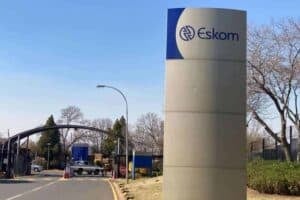Tuesday's briefing saw the Department of Public Enterprises release the roadmap to Eskom’s unbundling.

The start of the breakdown of Eskom as a monopoly supplier and provider of electricity to South Africa will take three years.
Government has finally unveiled the timelines and plans to “unbundle” the debt-laden utility, that supplies over 90% of the electricity in South Africa with an ageing, poorly maintained fleet that is struggling to meet electricity demands.
After acknowledging that Eskom cannot continue to operate as a vertically-integrated utility, Public Enterprises Minister Pravin Gordhan outlined how the government plans to unbundle the institution, starting by immediately establishing transmission and generation subsidiaries within Eskom Holdings.
The functional and legal separation of Eskom, described as the largest institutional transformation the country has undertaken in a strategically important area in recent history, will be completed by 2022.
The special paper on the roadmap for Eskom’s future comes as South Africa await details on how the government will approach the utility’s bailout from Finance Minister Tito Mboweni’s mid-term budget policy speech on Wednesday.
Not privatisation
“We have got to change the monopoly culture and monopoly pricing,” said Gordhan.
“The fundamental issue here is saying monopolies by their nature are wasteful; monopolies by their nature are extravagant costs; monopolies by their nature are self-interested. They don’t look outside of themselves.”
But this will not be done through privatisation as envisaged by Mboweni’s economic discussion paper, at least for the medium-term.
Transmission
The transmission entity will be 100% government-owned. Its core function will be to act as an “as an unbiased electricity market broker”.
The business will have two key roles: acting as a systems operator that will invest in and manage the transmission grid that includes 33 000km of transmission lines, and as a market operator that will balance demand with supply on a least-cost basis.
Watch Gordhan explaining on Tuesday why the situation at Eskom needs to change:
Gordhan said the operator will have a buying component, purchasing energy from Eskom’s generation arm and other independent power producers (IPPs) through power purchase agreements (PPAs) with “predefined, fixed and guaranteed tariffs” which, in the long term, will transition to an open market model.
Functionally, the transmission entity will be set up by March 2020, including the appointment of an interim board, while the full separation into a commercial subsidiary should be completed by December 2021.
Generation
Eskom’s generation company will consist of the current fleet, with each power station having a PPA with the transmission entity.
The paper states that the government is considering creating two or more generation units, in order to increase “intra-company competition amongst the generation subsidiaries and drive efficiencies in generation.
“Over time the generation market will become more competitive and decentralised with new public, private and other generators entering this market as well as the [Integrated Resource Plan’] energy mix, including Eskom ‘newbuild power stations’,” the document states.
Distribution
There is little detail as to how the separation of the distribution function – currently handled by municipal- as well as Eskom distributors – will unfold. Gordhan said more consultation has to take place with municipalities that fall under this, due to their dependence on revenue from electricity tariffs.
Six benefits
In a nutshell, the restructuring of Eskom is expected to:
> Increase transparency with regards to operations and costs
> Promote innovation and entrepreneurship
> Drive economic growth in the country
> Drive increased competition in generation
> Provide a stable robust system, and
> Drive compliance with environmental legislation and policy.
Level playing field
Energy expert Chris Yelland says the 66-page plan is broad and not readily implementable at face value.
“The only thing they have committed to is the setting up of the transmission company as a subsidiary of Eskom and that is a long way from setting up an independent grid system operator which is something that has got to follow.”
Yelland says the current situation where Eskom controls access to the grid and is at the same time a generator means it gives preference to its own generation because it is not independent.
“We really need to create a system where there is a level playing field for all generators,” he says.
“At the moment there are perceptions – and, more than that, a reality – that IPPs do not operate on an equal playing field.”
Brought to you by Moneyweb.






